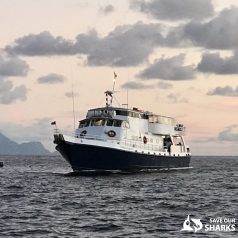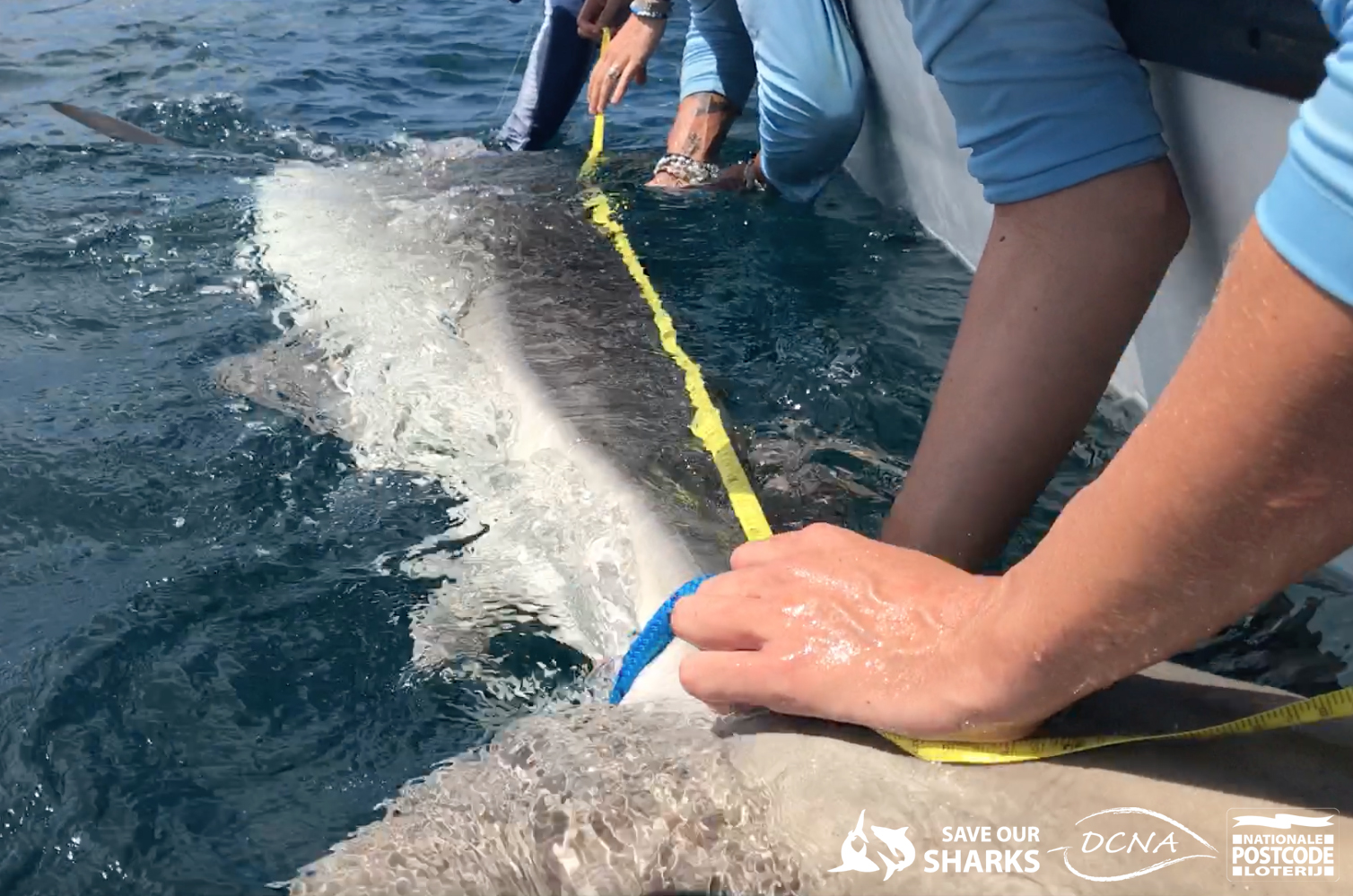
Shark tagging expedition on the Saba Bank
A total of 22 sharks were caught and tagged last month as part of a region-wide Save Our Sharks project. Little is currently known about the status of shark populations in Dutch Caribbean waters and tagging studies are a pivotal first step in determining what sharks are present, where they can be found, and more importantly, how best to improve management and protection of these important apex predators.
Shark scientists and conservationists from the Saba Conservation Foundation (SCF), Nature Foundation St. Maarten (NFSXM), Florida International University (FIU), and Sharks4Kids were onboard the “Caribbean Explorer II” that set sail from St. Maarten. The aim of the expedition was to learn as much as possible about shark abundance and diversity on the Saba Bank. Over the course of the six-day expedition, the team caught and safely released a staggering 22 sharks.
Sixteen of these sharks were Caribbean reef sharks (Carcharhinus perezi), which were fitted with PIT tags under the sharks’ skin just below the dorsal fin. PIT stands for Passive Integrated Transponder, which essentially acts as a lifetime barcode allowing scientists to identify sharks and track their movements. Veterinarians also use this type of tag to ‘microchip’ pets such as cats and dogs.
The other six sharks were tiger sharks (Galeocerdo cuvier), four of which received their own custom fitted satellite tracking device. Tiger sharks spend quite a lot of time at the surface, which allows satellite-tracking devices to be used to track their movements with pinpoint accuracy. The satellite tags were Wildlife Computers SPOT (Smart Position or Temperature Transmitting) tags, which were attached to the first dorsal fin of the sharks. These tags transmit a signal to satellites, which allow the animals to be tracked through the ARGOS system for up to four years. The tags use radio transmissions, so they must be exposed to air in order to transmit. Each time the dorsal fin breaks the surface, a geolocation estimation is given with an accuracy of a few hundred meters.






